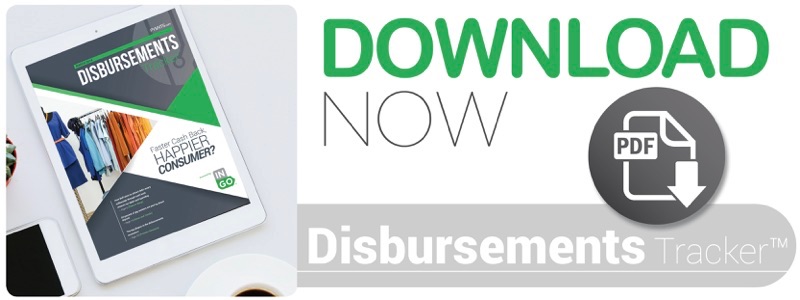Faster Cash Back, Happier Customers?

Cash back programs are nothing new for financial institutions (FIs), but the banking industry may be well-served to take a few cues from the masters of rewards: retailers.
Several major banks and FIs — including Bank of America, Discover and Wells Fargo, among others — offer cash back rewards on their credit card products to entice customers and encourage brand loyalty. The terms of their programs vary, generally giving customers between 0.5 and 1.5 percent cash back on all transactions or certain categories of purchases.
Despite incentives, a new study found debit cards appear to be more popular than credit cards, especially among younger customers. They made up 71 percent of payment cards issued worldwide in 2016, up from 70 percent a year earlier.
For millennials, these cards simply don’t induce the same debt-based anxieties as credit cards. A recent survey found credit card debt is a source of considerable worry for millennial consumers, with 33 percent reporting it as the most feared life aspect. By comparison, just 20 percent cited death as a top fear.
It’s no wonder younger customers are expected to drive debit card issuance in the future, so how can debit card-loving millennials get their hands on the same rewards offered to credit card consumers?
According to Eduardo Urdapilleta, executive vice president and chief deposit officer for Bank of Internet USA (BofI), the digital-only bank may have a solution. Its debit card-based cash back program offers rewards to consumers who hold a certain minimum balance, disbursing funds to their checking accounts within 24 hours of an eligible purchase. In a recent interview, Urdapilleta told PYMNTS how millennials are responding to the program — and how BofI plans to use it to help customers gain financial stability.
Think like a retailer
The San Diego, California-based bank took cues from successes seen in the retail market when developing its debit card-based cash back program. The basic premise is to offer customers a financial reward for choosing BofI, Urdapilleta explained, and checking products can be used immediately, rather than waiting until customers hit a certain number of earned points.
The bank’s cash back program allows users to earn up to 1 percent cash back with a limit of $2,000 per month. Customers remain eligible for the 1 percent if they maintain a daily minimum of $1,500. The rate dips to 0.5 percent if the balance falls below that threshold.
Having the cash back rewards automatically deposited into members’ checking accounts adds to their tangibility. For example, a BofI member purchases a $500 coat from a store using his BofI debit card. That customer would receive a $5 cash back, disbursed directly into his account, the following day.
Learning lessons from eCommerce retailers, most notably Amazon, is essential for banks to entice customers with rewards they can use almost right away, Urdapilleta added.
“We tend to look at online retailers as the forefront of change in how you serve the customer,” he said. “Retailers have been more focused on what the customer really needs — and serving them fast — which is something that banking as a whole has been lagging behind in.”
Winning the millennial market
By offering a cash back program that disburses rewards within 24 hours, BofI aims to spare customers the waiting associated with seeing rewards arrive in their accounts — a process that can sometimes stretch from several days to many weeks.
This accelerated speed of distribution closely resembles the rise of instant payments in other sectors. Companies #KillTheCheck in these instances, replacing it with digital funds that are immediately available and safe to spend. As such, insurers, lenders and even banks are delivering instant funds to card and wallet accounts through technologies like push payments.
“Because [they] can use it immediately, it’s more aligned with customer trends and behaviors,” Urdapilleta said.
Because BofI is a digital-only company without a network of brick-and-mortar bank branches, a rewards-based checking account is a useful feature to attract millennial customers who heavily value rewards. The checking account is designed to speak specifically to this generation, offering an added incentive to embrace digital banking.
“Cash back checking is mostly focused on millennials who, according to our studies, like to be rewarded [for] their behavior,” Urdapilleta said. “Many people in that particular demographic are interested in rewards for their transactions.”
It isn’t just BofI’s own research fueling these initiatives, though. Other studies also indicate a strong reason to support this thinking, with one finding that 83 percent of millennials would switch banks in search of better offers — including more impressive cash back rewards or more attractive interest rates.
Cashing out credit cards
In addition to quickly depositing cash back rewards into a customer’s checking account, Urdapilleta said BofI’s solution also aims to appeal to consumers who want a rewards-based way to avoid debt entirely.
Because debit cards are linked to checking accounts, and withdrawals and deposits are seen immediately, they can typically help customers remain on more stable financial ground and thus also help them avoid debt.
“The younger generation tends to be more conservative in their expenditures than 30-somethings or 40-somethings, particularly in terms of not getting into debt,” Urdapilleta explained.
He noted the fear of debt may persist because many millennials are already heavily saddled with student loans. According to student loan resource Student Loan Hero, the average college graduate from the class of 2016 holds more than $37,000 in student loans, a trend causing many millennials to delay homeownership plans.
Aside from helping customers avoid accruing additional debt, faster disbursements also fulfill the instant gratification associated with shopping and earning rewards. In the future, Urdapilleta said BofI plans to continue to look to the retail sector for inspiration.
“Our hope is that we can become the next Amazon,” he said. “We can become the next big changer of one of the main industries in the country, which is banking.”
Winning over the loyalty of a generation burned by debt might be an ambitious goal, but it’s one Urdapilleta believes banks can achieve by taking a retail-centric approach. Perhaps by offering fast-acting rewards, banks can find new opportunities through which to engage and retain their debt-weary customers.

